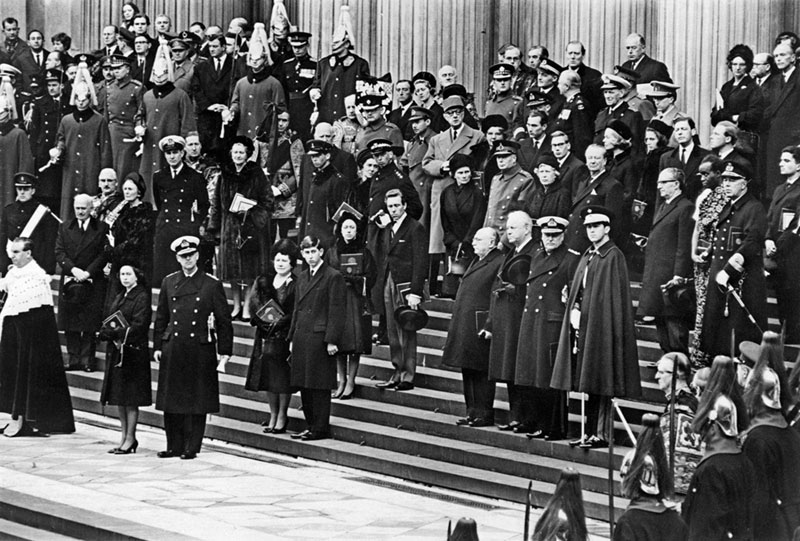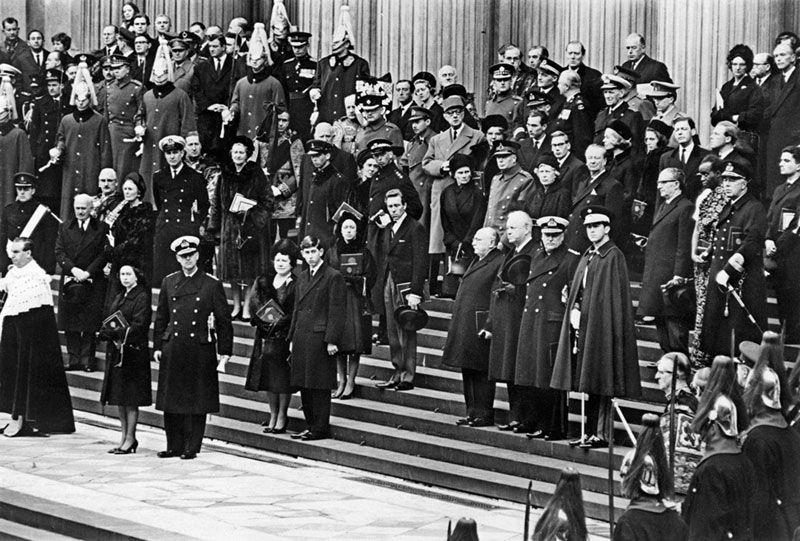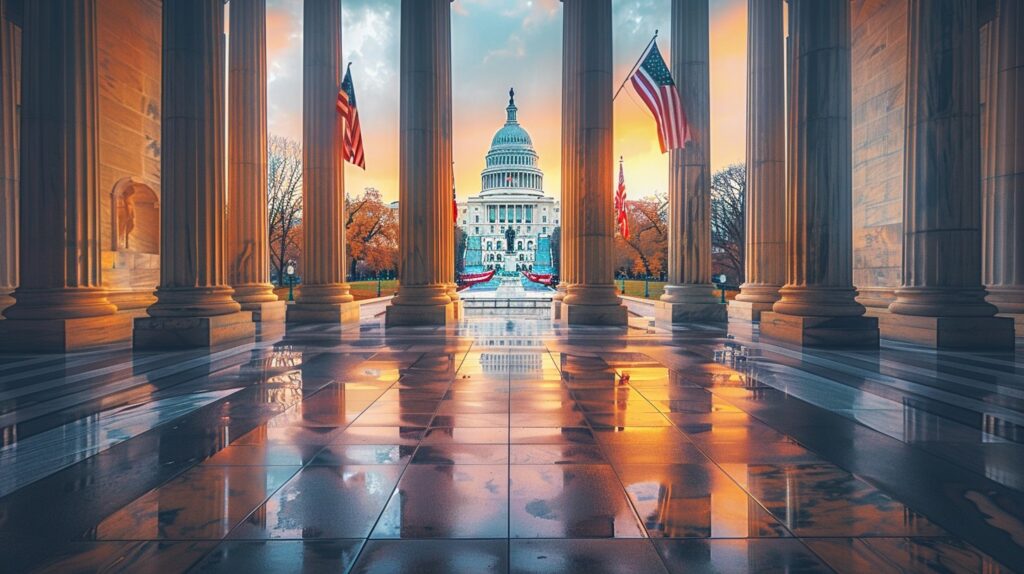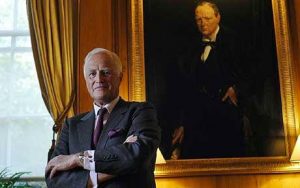Bulletin #81 - Mar 2015
The End of the Beginning

March 7, 2015
January Commemorations Give Way to Year of Education
By SIR DAVID CANNADINE
 Planning for the official commemorations of the fiftieth anniversary of Churchill’s death began four years ago. Historian Sir David Cannadine recalls how the coordinating body, Churchill 2015, came into being and what still remains to be done this year.
Planning for the official commemorations of the fiftieth anniversary of Churchill’s death began four years ago. Historian Sir David Cannadine recalls how the coordinating body, Churchill 2015, came into being and what still remains to be done this year.
The idea for Churchill 2015 originated over a dinner at Brooks’s Club in London in the autumn of 2011. There were only two people present, Mary Soames and myself. Some time before I had sent Mary a letter, suggesting that, since the fiftieth anniversary of her father’s death was not all that far off, it might be a good idea to ponder how that anniversary would be marked, and how the many organizations that made up the international Churchill world might be involved.
She said she thought this a very good idea, and that she would do all she could to help get the family fully involved as well as the Churchill organizations with which she had especially close links. (It never occurred to me at the time, but perhaps Mary also wanted to ensure that all this would be in place because she might not be there to oversee things herself in the anniversary year.) She absolutely delivered on all her undertakings, and she also insisted that since I had proposed such an organization, then I had better chair it.
It was a request, indeed an injunction, that I could not possibly have gainsaid or refused. And so Churchill 2015 was born, a committee of oversight, with representatives from the three branches of Churchill’s descendants, and from all the major institutions that make up the international Churchill world: Churchill College Cambridge and the Churchill War Rooms; the Winston Churchill Memorial Trust and the English-Speaking Union; Blenheim and Chartwell; the National Churchill Museum at Fulton, Missouri and the Winston Churchill Foundation of the United States; and finally The Churchill Centre, where the UK Trustees eagerly took on a hosting, coordinating and fundraising role.

2025 International Churchill Conference
As momentum for planning intensified, we were joined by representatives of many other groups and organizations with whom Churchill had been closely associated, or who had become more recently involved with aspects of his legacy, including the Universities of Bristol and Essex, the Science Museum, the Royal Mint, and Bloomsbury Publishing. We met at regular intervals, in part so that information could be exchanged as to what each organization was planning to do on its own, but also to focus on some flagship events and programmes to which everyone was willing to sign up.
Early on we decided that for the flagship events and programmes, we would focus on three areas: commemoration, education and legacy, with the balance between the three evolving and changing as the year 2015 unfolded. We began with commemoration, for which the most significant day was 30 January, the fiftieth anniversary of Churchill’s state funeral.
For all of us lucky enough to be present, 30 January 2015 was an unforgettable day of commemoration and reflection, made all the more memorable and moving by the crowds of people who turned out along the Thames Embankments and on its bridges to see MV Havengore pass by.
Much of 2015, as we now look forward beyond commemoration, is focused on education with the aim of engaging and inspiring young people. Several great exhibitions are appearing this year. The Science Museum hosts “Churchill’s Scientists,” which opened in late January to great critical acclaim. Chartwell is presenting “Death of a Hero,” which explores Churchill’s state funeral, while Blenheim has reinvigorated its Churchill display. And in Paris “Churchill and de Gaulle” will open at the Musée de l’Armée in April.
The third strand of Churchill 2015, which will become the most important as we move towards the end of the year, is legacy, where our aim is to highlight, develop and enhance the existing work of Churchill organizations in ways that will ensure a lasting impact. The Winston Churchill Memorial Trust will increase the number of annual Churchill Fellowships, and is also overseeing a major programme looking at the challenges and opportunities facing global leaders in the early twenty first century.
We are, of course, only in the first quarter of 2015, and so there is a much more to do, but the events of 30 January were hugely successful and generated a great deal of media interest. They also gave all of us involved an enormous sense of purpose, which will last as we go through the year. Fifty years after his death, Churchill is still making the news like no one else, and as we move from commemoration to education to legacy, there is good cause to hope that he will continue to do so throughout 2015—and in the years beyond.
Sir David Cannadine is Chairman of Churchill 2015 and Dodge Professor of History at Princeton. He will speak at the 32nd International Churchill Conference taking place in Oxfordshire from 26–29 May.
Subscribe
WANT MORE?
Get the Churchill Bulletin delivered to your inbox once a month.






